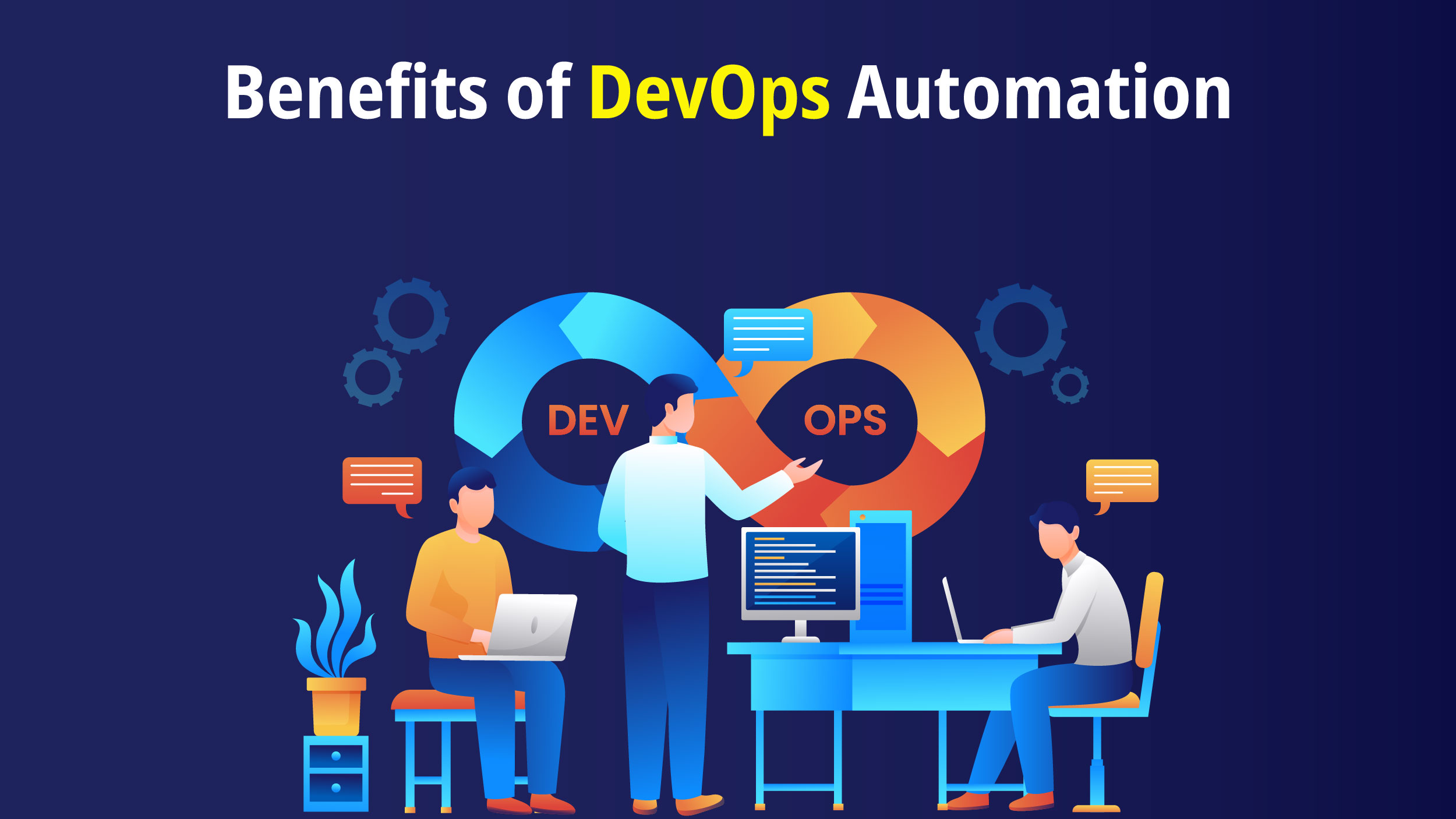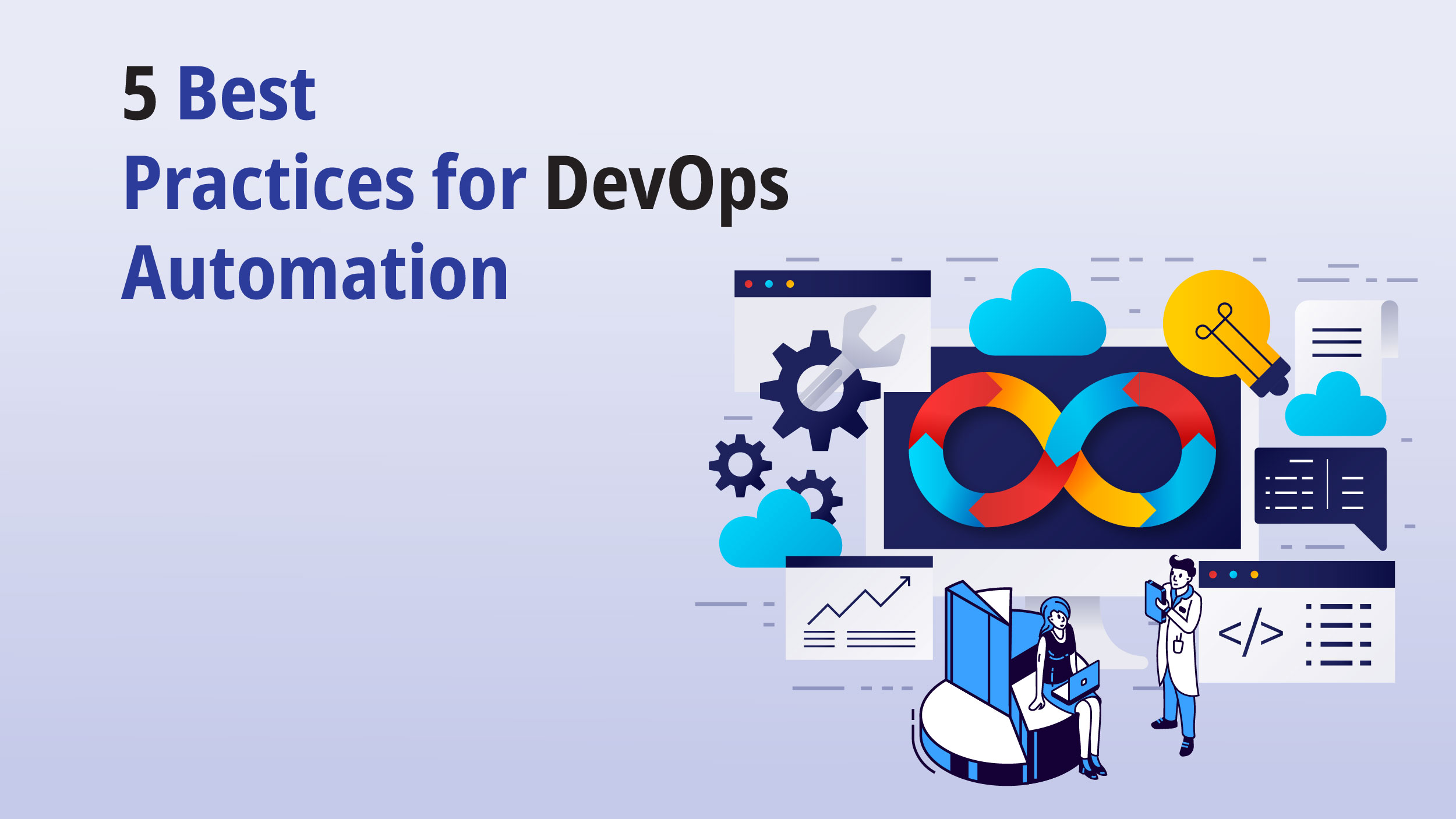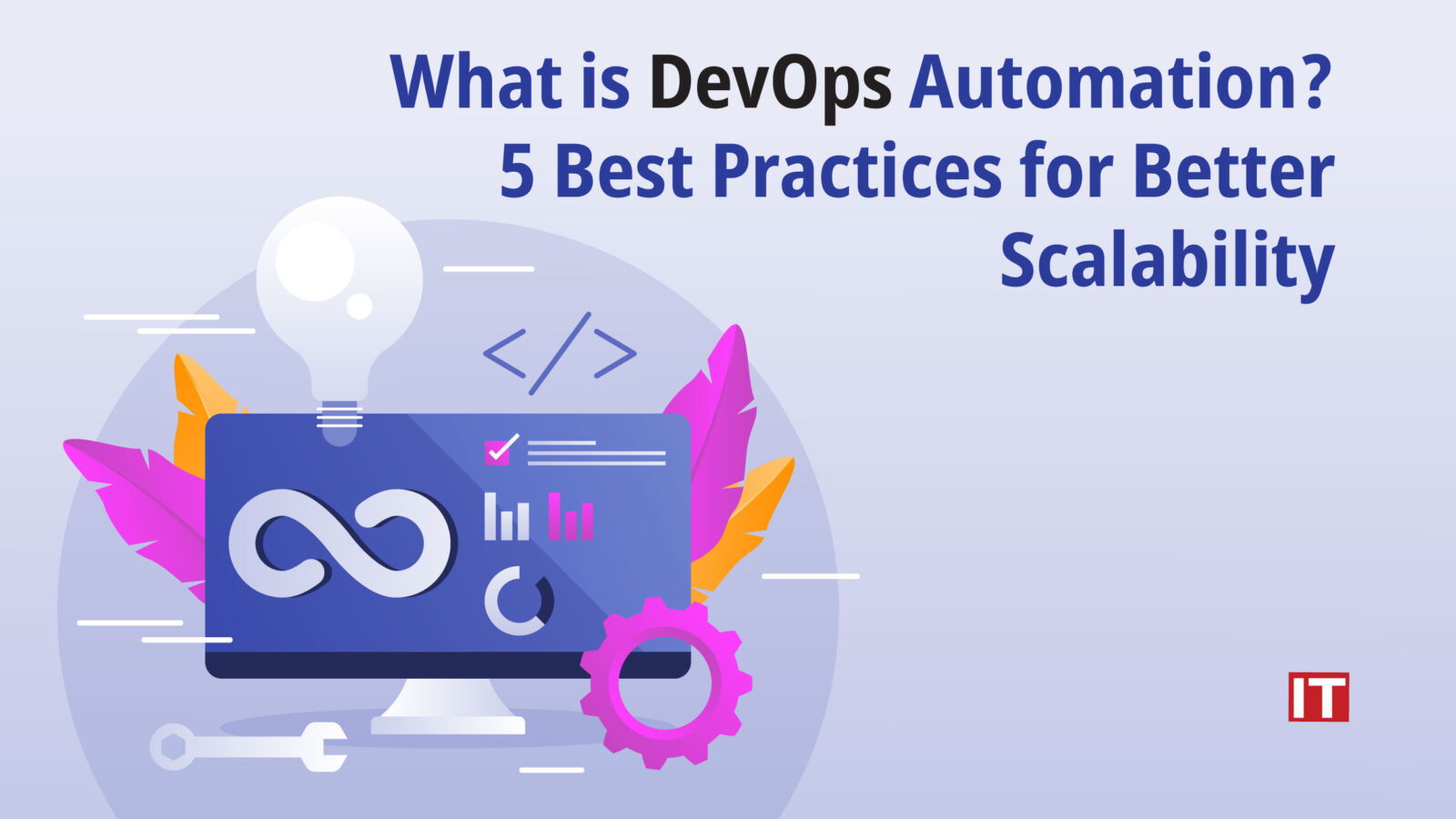A simple Google search on DevOps leads to many questions on what it is, where to learn the skill, how to learn it, whether it is high-paying, and so on.
But what’s with the fuss? Is it because DevOps automation streamlines repetitive tasks and bridges the gap between the development and operations teams? Or is it much more than that?
According to a recent report, 81% of companies are looking to improve their automation efforts. This highlights a benchmarked DevOps trend in IT adoption. Let’s learn more about why companies are favoring this modern approach.
What Is DevOps Automation?
DevOps automation is the use of technologies and tools to automate repeatable, routine tasks in the software development and operation lifecycle. DevOps is a short form of development operations.
Put simply, it eliminates the barriers between conventional siloed teams, operations, and development. Under this model, every team works as a single unit to help build, rectify, revise, and release software applications faster.
DevOps for automation testing is crucial as it doesn’t require much human intervention to manually check every code, run tests through the development process, and deploy code to production. One of the best examples is the adoption of the DevOps approach by Netflix, which led to 1000x monthly streaming growth.
Also Read: Top 5 Penetration Testing Tools You Need to Know in 2024
Benefits of DevOps Automation
 Automation brings several advantages that make it easier to achieve the goals of DevOps.
Automation brings several advantages that make it easier to achieve the goals of DevOps.
- Consistency: Where processes are highly automated, they are also consistent and predictable. A software automation tool will always do the same thing until it is reconfigured to do otherwise. The same is not true for manual processes that are prone to human error.
- Speed: Where processes such as code integration and application deployment are automated, they happen much faster. This is true for two main reasons. There isn’t any need to wait for a human to be ready before a process can start. Two, automated processes tend to be executed faster. An engineer manually deploying a new release will need to assess the environment, type out configurations, verify that they successfully deployed the latest version, and so forth. In contrast, an automation tool can perform these operations almost instantaneously.
- Scalability: Manual labor is often not practical for large-scale processes that can be managed by hand. For example, if you work with a single application and production environment, you can manually deploy new releases. However, it becomes very challenging to deliver new code consistently and quickly when your team handles many applications and deploys to multiple settings (such as multiple clouds or operating systems).
Can DevOps Processes Be Automated?
Depending on the business objectives, expected results, and organizational phase, implementing DevOps automation and IT operating framework solutions can be easy or somewhat difficult.
Whether the IT environment is hosted on-premises, in a public cloud provider, or a hybrid cloud platform, the following DevOps processes can be considered for automation:
- Automated CI/CD pipelines. These are considered the best, especially for agile DevOps teams. Automating CI/CD is essential for creating quality, secure code and achieving key business release demands. So is continuous deployment — if appropriate — where every changed successful element is automatically deployed to production.
- Automated testing. End-to-end automated testing is aimed at error, defect, and bug detection and is performed at the CI/CD pipeline stage to ensure frequent high-quality software update releases to end users.
- Automated application monitoring. Application and log monitoring provides in-depth intelligence into application performance and monitors issues reported by logs or DEM management for rapid MTTR. The ultimate goal is 24/7 uninterrupted service operation on any device from any location.
- Automated network provisioning. It provides computing capacity when and where it is needed using pre-defined procedures and without human intervention. It can support application deployment in software containers like Kubernetes, based on the IT solution.
5 Best Practices for DevOps Automation
 Foster Collaboration Between Humans and Automation: It’s often hard to automate every step of a DevOps pipeline. Even with lots of automation, we still need people to watch over things and step in when something goes wrong or needs a change. However, teams should still try to automate as much as they can. This is because automation cuts down on the need for people to handle simple, day-to-day tasks in DevOps. Bring together the DevOps tools Having too many different tools and parts in the pipeline can block clear sight and make delivering software more complex.
Foster Collaboration Between Humans and Automation: It’s often hard to automate every step of a DevOps pipeline. Even with lots of automation, we still need people to watch over things and step in when something goes wrong or needs a change. However, teams should still try to automate as much as they can. This is because automation cuts down on the need for people to handle simple, day-to-day tasks in DevOps. Bring together the DevOps tools Having too many different tools and parts in the pipeline can block clear sight and make delivering software more complex.- Practice Continuous Integration and Continuous Delivery (CI/CD): CI/CD is a core DevOps practice involving the continuous integration of code into a shared repository and automating the process of building, testing, and deploying changes. Automation is key here, allowing developers to spot issues early and deliver software more frequently.
- Automate Testing: Automated testing is essential in DevOps. By automating tests, every code change is thoroughly tested and validated before moving to development, QA, and production environments. This process helps catch bugs and defects early, ensuring stable and reliable code reaches production.
- Standardize Workflows and Processes: Standardizing workflows and processes is crucial for DevOps automation. Ensure that your workflows, technologies, and metrics are consistent and accurate across the organization. However, maintain a balance with flexibility, as different teams may have unique workflows and needs.
- Monitor and Enhance: In DevOps automation, observability is critical. Include monitoring and observability techniques in your practice to learn more about the functionality and state of your systems. You may find areas for improvement, streamline procedures, and proactively handle problems by monitoring metrics and logs.
Bottom Line
DevOps automation is a boon for DevOps teams as it helps get rid of the boring stuff by making machines do repetitive tasks. This way, people can work on other important stages of the product lifecycle rather than spending time on dull tasks. By leveraging automation tools and practices, organizations can streamline processes, improve collaboration, and deliver software more efficiently. From continuous integration and delivery to automated testing and security integration, DevOps automation empowers teams to work smarter, not harder.
































